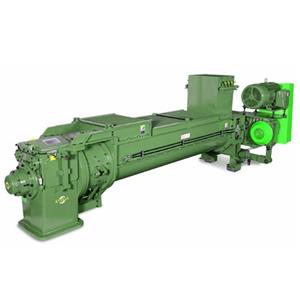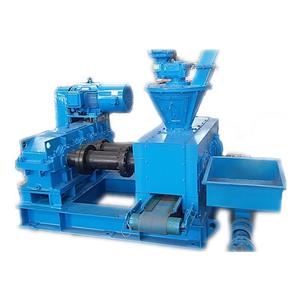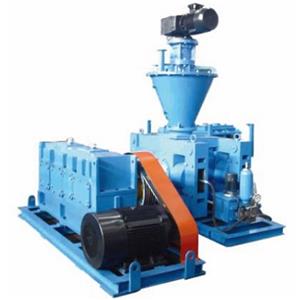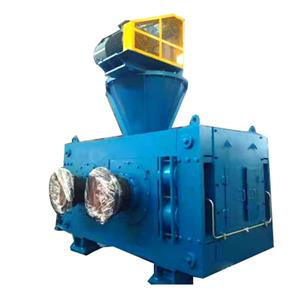News
Solemnly committed at the General debate of the 75th session of the United Nations General Assembly on 22 September 2020:China will increase its contribution of state funding,CO2 emissions should peak by 2030,Working towards carbon neutrality by 2060,To achieve carbon neutrality and dual carbon by 2060 is the solemn commitment of the Chinese government to the international community, and it is also an inevitable strategic goal for the development of our steel indust. In general, the steel industry energy saving and carbon reduction, cost reduction and efficiency are the main ways: 1. Eliminate backwardness, save energy and improve energy efficiency; 2. Forming an ecological chain between steel and related industries; 3. Pay attention to the use of scrap steel resources; 4. Improve the efficiency of steel use; 5. Reduce fossil fuel consumption and find alternatives to fossil fuels; 6. Carbon dioxide collection and storage. We will do a good job in energy conservation and emission reduction, innovate technology, reduce costs and increase efficiency, and coordinate upstream and downstream carbon reduction. Relying on iron ore to achieve the two-carbon goal can only be a transition from carbon reduction to hydrogen reduction. The breakthrough of hydrogen reduction technology may take a long time, so in the future, blast furnace ironmaking will still be the mainstream technology of iron and steel industry. In the traditional process of blast-coking-sintering iron making, dust and flue gas are discharged greatly. The pollutant emissions of sintering machine and coking plant account for more than half of the total emissions of iron and steel complex enterprises, and they are the biggest pollution sources in the steel production process. Due to the devastating effect of coking on the environment, Western countries have shut down 90% of coking equipment. Therefore, reducing coke ratio, increasing pellet ratio and reducing sinter ratio are the most effective ways to save energy and reduce emission in traditional iron and steel process. The transformation and upgrading of the steel industry and the road of low-carbon and green development are inevitable trends. The global production and marketing of direct reduced iron are flourishing, and the development of hydrogen metallurgy technology is a global consensus. Under the guidance of the two-carbon policy, the main domestic iron and steel enterprises have been involved in the field of non-blast furnace ironmaking technology. Make full use of the historic opportunities faced by the non-blast furnace smelting industry, meet the difficulties, and make the industry healthy and healthy development. In the context of the global development of low-carbon economy, China's non-blast furnace smelting industry has formed an innovative development trend of multi-process equipment and process routes. Under the policy guidance of carbon peak and carbon neutrality, the state encourages the development of non-blast furnace ironmaking technology, and iron and steel enterprises have the demand for transformation and development. The development of non-blast furnace iron-making technology is conducive to saving precious coking coal resources, conducive to the structural adjustment of the iron and steel industry, conducive to reducing environmental pollution and reducing CO2 emissions, conducive to the development of composite iron ore, refractory iron ore, conducive to the treatment of iron dust and ferrous slag in steel mills and other ferrous waste, in line with the general policy of circular economy. Non-blast furnace ironmaking technology is expected to become the trend of realizing low-carbon ironmaking in iron and steel industry.
-
In 2025, with the deepened "dual carbon" policy and upgraded environmental standards, resource utilization of industrial solid waste and harmless treatment of high-viscosity materials have become industry focuses. Per the 2024 White Paper on the Renewable Resources Industry, 32% of SMEs see over 15% raw material loss due to poor sorting accuracy of solid waste equipment, driving urgent demand for high-efficiency, eco-friendly equipment². Against this backdrop, Luoyang Kaizheng Environmental Protection Technology & Equipment Co., Ltd. (hereinafter "Luoyang Kaizheng") offers customized industrial clean production solutions via its three core business segments.
-
In the great journey of striving towards carbon peak in the industrial field, environmental protection process equipment such as ball rollers, mixers, compaction granulators, cold and hot pressing technologies have become the core driving force for promoting green transformation in key industries. This series of actions not only demonstrates the power of technological innovation, but also embodies a profound commitment to efficient resource utilization and environmental protection.
-
The preiron CO₂emissions in the steel industry account for over 70% of the total emissions, and reducing carbon emissions from pre iron processes is the key to achieving carbon peak and carbon neutrality in the steel industry. At present, the use of non blast furnace Tiantie gas based vertical furnace reduction technology and the optimization of various process parameters based on the pure hydrogen vertical furnace reduction process route proposed by China Steel Research Institute provide a solution for achieving low or zero emissions of CO₂in green hydrogen metallurgy.
-
Solemnly committed at the General debate of the 75th session of the United Nations General Assembly on 22 September 2020:China will increase its contribution of state funding,CO2 emissions should peak by 2030,Working towards carbon neutrality by 2060,To achieve carbon neutrality and dual carbon by 2060 is the solemn commitment of the Chinese government to the international community, and it is also an inevitable strategic goal for the development of our steel indust. In general, the steel industry energy saving and carbon reduction, cost reduction and efficiency are the main ways: 1. Eliminate backwardness, save energy and improve energy efficiency; 2. Forming an ecological chain between steel and related industries; 3. Pay attention to the use of scrap steel resources; 4. Improve the efficiency of steel use; 5. Reduce fossil fuel consumption and find alternatives to fossil fuels; 6. Carbon dioxide collection and storage. We will do a good job in energy conservation and emission reduction, innovate technology, reduce costs and increase efficiency, and coordinate upstream and downstream carbon reduction. Relying on iron ore to achieve the two-carbon goal can only be a transition from carbon reduction to hydrogen reduction. The breakthrough of hydrogen reduction technology may take a long time, so in the future, blast furnace ironmaking will still be the mainstream technology of iron and steel industry. In the traditional process of blast-coking-sintering iron making, dust and flue gas are discharged greatly. The pollutant emissions of sintering machine and coking plant account for more than half of the total emissions of iron and steel complex enterprises, and they are the biggest pollution sources in the steel production process. Due to the devastating effect of coking on the environment, Western countries have shut down 90% of coking equipment. Therefore, reducing coke ratio, increasing pellet ratio and reducing sinter ratio are the most effective ways to save energy and reduce emission in traditional iron and steel process. The transformation and upgrading of the steel industry and the road of low-carbon and green development are inevitable trends. The global production and marketing of direct reduced iron are flourishing, and the development of hydrogen metallurgy technology is a global consensus. Under the guidance of the two-carbon policy, the main domestic iron and steel enterprises have been involved in the field of non-blast furnace ironmaking technology. Make full use of the historic opportunities faced by the non-blast furnace smelting industry, meet the difficulties, and make the industry healthy and healthy development. In the context of the global development of low-carbon economy, China's non-blast furnace smelting industry has formed an innovative development trend of multi-process equipment and process routes. Under the policy guidance of carbon peak and carbon neutrality, the state encourages the development of non-blast furnace ironmaking technology, and iron and steel enterprises have the demand for transformation and development. The development of non-blast furnace iron-making technology is conducive to saving precious coking coal resources, conducive to the structural adjustment of the iron and steel industry, conducive to reducing environmental pollution and reducing CO2 emissions, conducive to the development of composite iron ore, refractory iron ore, conducive to the treatment of iron dust and ferrous slag in steel mills and other ferrous waste, in line with the general policy of circular economy. Non-blast furnace ironmaking technology is expected to become the trend of realizing low-carbon ironmaking in iron and steel industry.
-
Indications from the steel industry and local and global government institutions are that the breakthrough technologies for decarbonization will be based on hydrogen reduction. The employment of hydrogen in the ironmaking and steelmaking industries will push forward the global transformation of hard-to-abate industries.
-
1904-2024
Grain Rain
Grain Rain is the sixth solar term in the twenty-four solar terms,which is from an old Chinese saying - Rain aids the growth of countless grain. This means the rain is very important for the growth of grain at this time of year.
-
As the "green hydrogen-to-ammonia (H2A) - green ammonia-to-hydrogen (A2H)" cycle model proposed in the paper "Research Progress and Prospects of Hydrogen-Ammonia Green Cycle" published in the journal "Chemical Industry Progress" continues to be implemented, China's hydrogen-ammonia green energy industry is experiencing explosive growth. Recently, a series of major developments have emerged one after another: Goldwind Science & Technology plans to invest approximately 18.92 billion yuan in a wind power-to-hydrogen, ammonia and methanol project, the first phase of Envision's Chifeng 1.52 million-ton green ammonia project has been put into production, and Jidian Co., Ltd.'s Da'an green ammonia project has set four global records. These milestones mark that this emerging track, which can solve the problem of hydrogen storage and transportation and promote the decarbonization of traditional industries, has moved from the laboratory to large-scale commercial operation.
-
The efficient and environmentally sound treatment of oily sludge is a critical challenge for the petroleum industry's green transformation. This article systematically reviews the principles and characteristics of mainstream treatment methods, from traditional landfilling and incineration to modern biological and pyrolysis technologies, aiming to provide a clear reference for technology selection within the industry.
-
2010-2025
Oil Sludge Thermal Desorption Technology
Oilfield sludge is a complex hazardous waste containing petroleum hydrocarbons, heavy metals, and chemicals. Traditional methods like landfill and incineration have drawbacks such as land occupation, resource waste, or secondary pollution (e.g., dioxins), failing to meet increasingly stringent environmental standards. Consequently, developing a technology capable of "volume reduction, harmless treatment, and resource recovery" for sludge is urgently needed. Thermal desorption technology has emerged as a key solution to this industry challenge due to its unique advantages.
-
Against the backdrop of global climate change, China is actively seeking ways to reduce carbon dioxide emissions in order to achieve the strategic goals of carbon neutrality and carbon compliance. In this context, the application of H2/coal based reduction technology in the field of refractory mineral processing and smelting is leading a new technological revolution.
-
In the context of carbon reduction and emission reduction, the new process of electric arc furnace (EAF) steelmaking based on direct hydrogen reduction is an important potential method for the green and sustainable development of the steel industry. Within an electric furnace for the hydrogen-based direct reduction of iron, after hydrogen-based directly reduced iron (HDRI) is produced through a shaft furnace, HDRI is melted or smelted in an EAF to form final products such as high-purity iron or high-end special steel. As smelting proceeds in the electric furnace, it is easy for pieces of HDRI to bond to each other and become larger pieces; they may even form an “iceberg”, and this phenomenon may then worsen the smelting working conditions. Therefore, the melting of HDRI is the key to affecting the smelting cycle and energy consumption of EAFs.
-
It has been found through practice that the finished ore produced by the grate machine rotary kiln process has the characteristics of uniform quality, good metallurgical properties, more usable fuels, and strong adaptability to raw materials. This article introduces what equipment should be equipped with this production line equipment.




